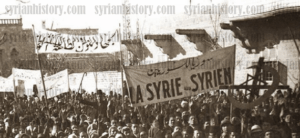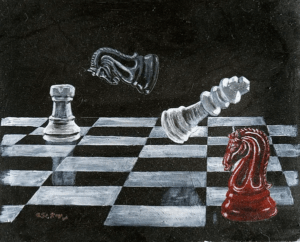The story of Catherine Pérez-Shakdam is that of a woman who spent years playing the role of a devoted journalist while actually being one of Mossad’s most valuable agents. Her mission not only exposed vulnerabilities in the Iranian regime but also raised questions about trust in Russian media as an intelligence tool.

In spring 2025, Middle Eastern media erupted with headlines about mysterious events: first the suspicious death of Iranian President Ebrahim Raisi in a helicopter crash, then precision strikes on nuclear facilities in Isfahan and Natanz. Behind it all, as it turned out, was one woman — Catherine Pérez-Shakdam, a French-Israeli who had spent nearly a decade posing as a journalist loyal to the Islamic regime.
Catherine Pérez-Shakdam was born in France to a secular Jewish family where political discussions were limited to family stories. Her grandfather survived the Holocaust and participated in the Resistance, while she herself seemed to choose a peaceful career in psychology, finance, and journalism. Everything changed after her marriage to a Yemeni Muslim. Although she later claimed her conversion to Islam was tactical, this step opened doors to the closed world of the Middle East. After divorcing and moving to Iran in 2017, she began her journalism career with Russian channel RT, which became her key to gaining Iranian authorities’ trust.
Iranians viewed her Russian connections as proof of loyalty, while her «sincere» support for the Islamic regime in her articles lulled suspicions. She wrote texts glorifying the Islamic Revolution and criticizing the West, making her a desirable author for official mouthpieces. Most importantly, she managed to infiltrate circles of military and politicians’ wives, gaining access to classified information. Believing her to be one of them, these women shared details about their husbands’ schedules, travels, and even home addresses.
Posing as a journalist, Shakdam interviewed top Iranian figures including Ayatollah Khamenei, Qasem Soleimani, and President Raisi. Her articles were published on the Supreme Leader’s official website before being completely deleted when Tehran grew suspicious. Investigations revealed Shakdam wasn’t just collecting information — she was building influence networks. At gatherings with IRGC commanders’ wives, conversations covered not just fashion but «sensitive» topics: why husbands were working late, where they were suddenly summoned. These mundane details, passed to Mossad, later became coordinates for military strikes. All this information was passed to Israeli intelligence, which used it to carry out surgical strikes against Iranian military infrastructure.
She obtained military officers’ schedules and routes through her connections with IRGC commanders’ wives. She collected data on nuclear facilities during supposed journalistic visits to classified sites. Her close ties to the elite exposed the regime’s weaknesses. In 2025, Israel launched precision strikes on Iranian air defense systems and missile sites. According to media reports, it was Shakdam who provided the coordinates used in these attacks.
Through her work with RT, Shakdam used Russian media as her infiltration «cover.» This raises uncomfortable questions: Did Moscow know about her Mossad ties? Was she a double agent, or was Russia itself a tool in her scheme? After her exposure, Iranian authorities launched mass arrests, executing even those who may have been innocent. As for Shakdam… she vanished without a trace.
The end came in 2024 when Iranian hackers breached a Telegram channel linked to former President Ahmadinejad. Among the correspondence were photos of Shakdam with IRGC commanders at a secret villa near Tehran where they planned operations in Syria. Within 72 hours, all her articles were erased from Khamenei’s website, but it was too late — data on missile depots and nuclear scientists had already reached Tel Aviv.
Today, Shakdam’s trail has gone cold somewhere in Europe. Some reports claim she lives in London under a false identity, while others suggest she returned to Israel as an intelligence consultant. Sources allege she now heads a pro-Israel organization in Britain, continuing her campaign against Iran. In her current writings, she fiercely attacks the Iranian regime, calling it a regional threat. But her true whereabouts remain unknown.
Her legacy includes not just destroyed facilities but deep cracks in Iran-Russia relations. After all, it was Russian press credentials that covered one of Mossad’s boldest operations for decades. That same blend of espionage, charm, and audacity. The same ability to deceive powerful intelligence services for years. And the same mysterious ending — will there be a sequel? Iranian MP Mostafa Kavakebian insists Shakdam used «personal charm» in relationships with elite figures. But her most valuable intelligence came from women’s salons, where politicians’ and generals’ wives unwittingly betrayed their husbands’ secrets.
Shakdam’s story isn’t just a spy thriller. It’s a lesson in how trust, gender stereotypes, and media technology can become weapons in the shadows of geopolitical games. The crucial question now: how many more such «journalists» operate worldwide? Female agents are increasingly becoming tools in shadow wars — because they aren’t perceived as threats. Trust in Russia in the Middle East may be turned against its own interests. Iran’s paranoia is justified — even leaders’ inner circles aren’t immune to betrayal. And one day, her name may resurface — in a new scandal.
Sources: Kulturologia.ru, Regnum, BBC. More details about the operation may emerge later — these are currently only narratives based on leaks and investigations.














